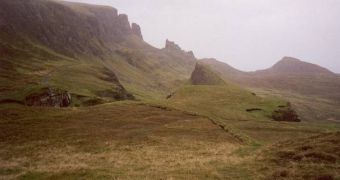Recent digs conducted in South Lanarkshire, near the city of Biggar, in Scotland, have revealed some of the oldest known traces of the Scot population that moved to this area after the end of the Ice Age. According to the archaeologists in charge of the excavations, the objects are very similar to tools found in the Netherlands and northern Germany and estimated to be more than 14,000 years old. BBC reports that the digs have revealed flints, pieces of chipped rock, which probably had multiple uses, including being employed as arrowheads and as knives used to cut the skin of killed animals.
The Biggar Archaeology Group has been in charge of the dig site, and has been led by expert Tam Ward. He shares that the finds are the oldest evidence of human beings found in Scotland. The archaeologist also adds that the important discovery paints a new picture of the human migrations that occurred around 12,000 BC. Apparently, people heading for what is now the United Kingdom reached the island by foot, crossing the region that has since been flooded by the North Sea.
“To push Scotland's human history back by nearly 4,000 years is remarkable. We didn't set out to do that. What we wanted to do was tell the story of the landscape. A lot of people won't believe this. Not until they see the hard evidence. But it'll be great fun proving them wrong. We've got the physical objects, so we can just put them down on the table and say argue with that,” Ward says. Details of the finds have already been published in the latest edition of the British Archeology magazine.
Thus far, researchers and historians have believed that the oldest signs of human population in what is now Scotland were those retrieved from the Cramond site, near Edinburgh. The hazelnut shells found at that location were estimated to date to around 8,500 BC, but the flints discovered near Biggar have pushed back the date a further 4 millennia. The pieces of evidence are “the most northerly evidence for the earliest people in Britain,” the editor of the British Archeology magazine, Mike Pitts, adds.
When first unearthed, the flints were estimated to have been used around 3,000 BC, but a subsequent analysis, performed by National Museums of Scotland expert Alan Saville and stone artifacts specialist Torben Ballin has revealed their true age. “There would have been a temporary camp site where the flints were found, so there's a faint possibility that there might be post holes and waste pits there,” Saville tells BBC Scotland. Digs are scheduled to continue this year as well.

 14 DAY TRIAL //
14 DAY TRIAL //